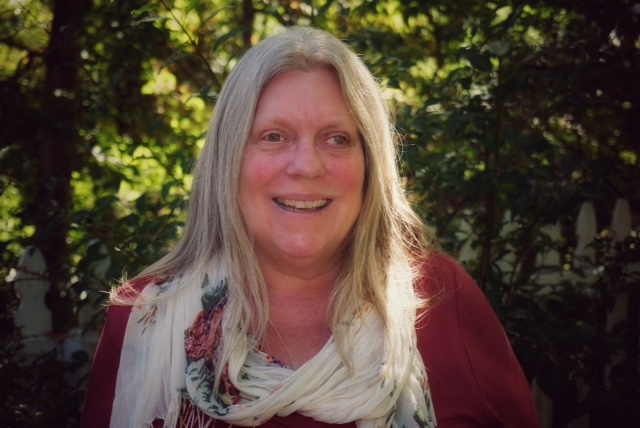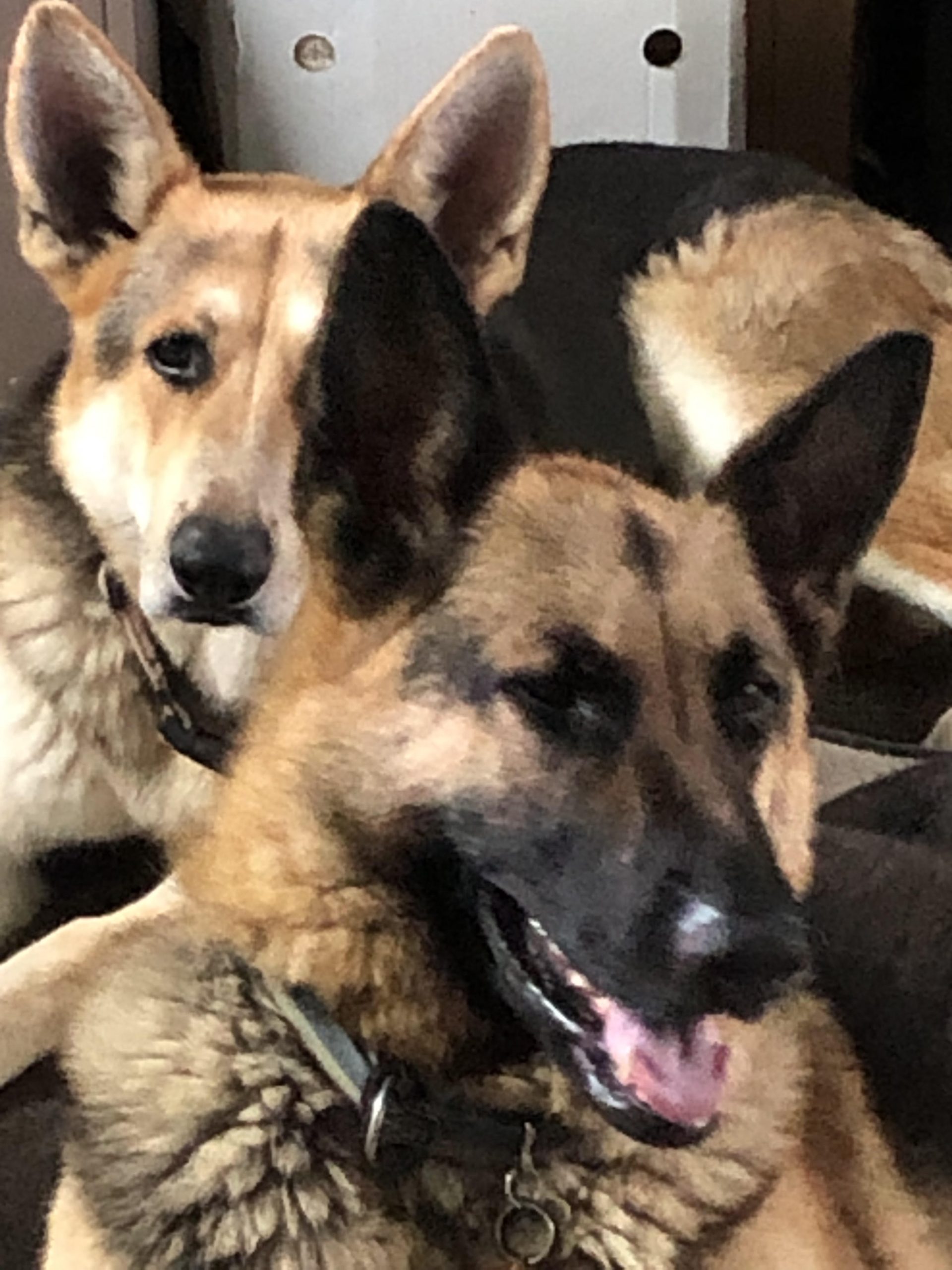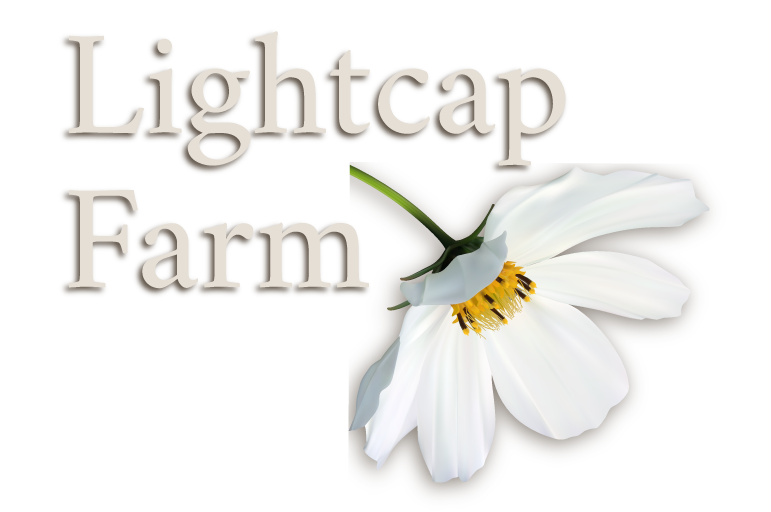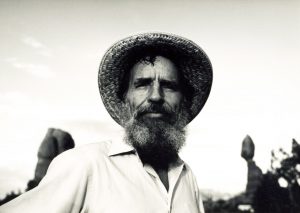I moved the farm! After Jack’s death in 2018, I gave it a good go on our land on the west slope of the Sierra Nevada. The cost of living there, along with rapidly increasing fire danger, became too much for me. My sons had all moved away, and my oldest, Forrest, suggested I move to Michigan near him and his partner, Katey.
Bonnie, Hayduke, and I now live in rural South-East Michigan on a little over two acres. This is much more manageable than the seven I had, and still ample to create a farm, which is by now in my blood. I am loving our new life here, although after over 50 years in northern California, those mountains will always be an integral part of me.
I’ve actually moved the farm much closer to the location of the Lightcap Farm in Edward Abbey’s Fool’s Progress: West Virginia. The landscape here is more like West Virginia than the landscape in the Tahoe National Forest. But then again we didn’t name our farm after Abbey’s fictional farm because of the location. For more on that, read my original welcome letter below.
I’m taking 2022 to generally recalibrate, so you won’t see much action on this website at the moment. I’ll be back though, both with new writing and photos of the new farm it evolves. I look forward to sharing my continuing journey with you.
Carolyn Crane, Owner and Manager, Lightcap Farm

Our Original Welcome Letter: September 2011
Thanks for visiting me at Lightcap Farm, which is both a real farm and a virtual farm, a word farm, someday soon a book farm. What led me, a middle-aged teacher and writer, to want to farm land, grow food, create forage? It was a ten year journey that began with my reporting for various radio and print outlets, mostly based in northern California. As the foodie revolution evolved, I was there with my reporter pad and microphone. The more I interviewed farmers, the more I wanted to become one. I’d had glimmers of this issue reporting before: I’d tire of reporting about other people doing things instead of doing them myself. But farming held a special appeal to me because of the product it created. I liked the energy of the farmers I interviewed. I liked their sense of groundedness, their sense of patience. I respected their allegiance to their land and their indifference to fashion. I once had a boss who used to tease me about being oblivious to popular culture. I never discussed this with any of the farmers I interviewed, but I sensed from them they’d found something more important than how Lost ended or what the new hot band was. They seemed to know something I didn’t, and I wanted access to that information.
While that was going on, my husband and I grew increasingly skeptical about agribusiness’s interest in our health. We noticed how much more we enjoyed the food we’d begun to grow than the food we bought at the market–even organic food. We began experimenting with growing starts from seed and cultivating different kinds of produce, mostly vegetables.
Then in 2009 I did something I’d never done before, and that bold action led me to Lightcap Farm. I realized in the beginning of that year that I had–since college–either been reading or writing on assignment. I’m a college instructor–English, communications, most recently education–and my job dictated most of the reading. Various assignments as a freelancer dictated the writing. I decided to take a year off from assignments. I set up my teaching schedule accordingly, and began a year of reading and writing that was just for me.
For the first two months I did nothing but watch television. Bonanza, specifically, and other old westerns. I’m not sure when I yanked myself away from the tube, but when I did it was with the clear message that I was to read Edward Abbey. Not The Monkey Wrench Gang or The Journey Home but the entire cannon of Edward Abbey. Since the assignment came from within and not without, I honored it, and for the rest of the year fell deeply in love with an author for the first time in years. Toward the end I read A Fool’s Progress: An Honest Novel, in which Henry Lightcap returns to his ancestral home: Lightcap Farm.
Through the generations it had been in his family, the farm had served as a working farm, a strip mine, a one man logging camp, and the home to many children and four-leggeds. Whatever the Lightcaps needed, the farm provided. Much like the sweet tree in the Shel Silverstein book, the farm gave and gave. In the end, it gave peace to Henry in his final moments and a final resting place for his dog, who had made the journey with him.
It was then I remembered all the farms I’d visited, from tiny Naked Farm in Nevada City to the rambling rice fields of Lundberg Family Farms near Chico. All the farms had something in common, and shared that in common with the Lightcap Farm in Abbey’s book. The magic ingredient, what I saw in those farmers that made them seem different, was a deep understanding of the symbiosis between farm and farmer, earth and human.
And so my family began our little farm, which may one day be commercial, or perhaps not. Some day it will have livestock, maybe even as soon as next summer. (We’re thinking chicken, rabbits, maybe the annual pig). We have meandering, sometimes intense discussions about what to plant and grow; our motivation coming specifically from a desire to feed ourselves and our neighbors while we enrich the land itself. I realized I’d found my home on the farm last week when I surrendered my basil to the bees, letting it go to flower and seed since it wanted to so badly. (I made a mental note to stagger plantings next year.) As soon as the flowers opened, dozens of bumble bees and honey bees appeared on the scene. I could not tell where they came from and have no idea how they survive a winter at such a high altitude (4200 feet). I watch them as much as I can each day, amazing that a choice I made could have such significance to so many creatures. I looked back at those years reporting on all the political issues of the day–contemporary gossip for the most part, largely disinformation no matter how hard reporters try. I remember the self-importance of so many pundits who, unlike the farmer, didn’t have a clue about any symbiotic relationship with animal or plant, hill or river. As I finally understand what I saw in those farmers’ eyes all those years ago, I find myself on a long, joyful road to learning about what is truly important to me.
Two thousand nine came and went, and my reading assignments and writing assignments resumed. This time, though, I was the one assigning. I quickly worked through Michael Pollan, and afterward, coming back to Wendell Berry for the first time in years, was duly humbled. My experience is nothing new or singular; it just took me as long as it took me to understand how, like the food I’d been raised on, my understanding of where I fit into the natural landscape had been pasteurized and homogenized. I am one of hundreds of thousands of 21st century humans whose ear has been bent to that song that comes straight from where the food meets the dirt.
And, twenty years into a writing and radio career, the song led me down a much different road. I will always read, write, and teach. Now it is often with dirt under my nails and a much different glint in my eye. I am grateful that I, like Henry, found a farm to come home to, a slab of tangible integrity in a world now run by phantoms, ingrates, criminals, and monsters. “A culture disintegrates,” writes Berry, “when its economy disconnects from its government, morality, and religion.” That used to be my world, my mission to bring its details to my readers and listeners. I’ve found a different mission. You can find me where the dirt meets the stem, where the bee meets the basil flower.
Carolyn Crane


